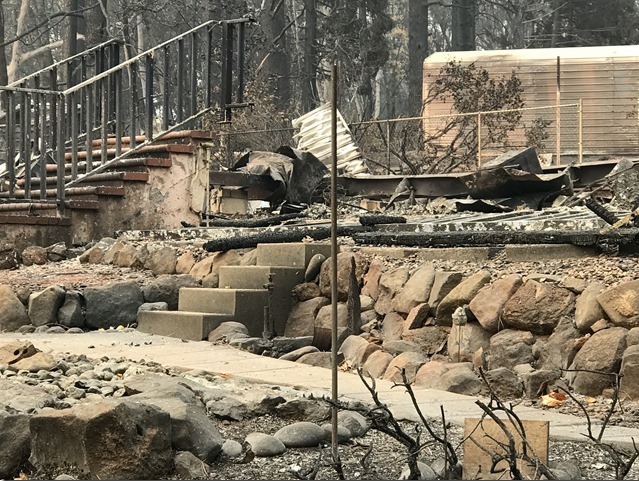By William Yragui
 Working with search and rescue teams I have walked through the ashes of devastating fires in Northern California. In 2017, I sifted through blackened foundations in Santa Rosa. Last year, our team searched Paradise, California, where little remained except for foundation piers. The entire town was decimated and at least 86 people died.
Working with search and rescue teams I have walked through the ashes of devastating fires in Northern California. In 2017, I sifted through blackened foundations in Santa Rosa. Last year, our team searched Paradise, California, where little remained except for foundation piers. The entire town was decimated and at least 86 people died.
Planners at FEMA warn against development in the urban-wildland interface, especially near canyons. FEMA’s “Home Builder's Guide to Construction in Wildfire Zones” says: “A wildfire at the bottom of a vegetated canyon can lead to extremely hazardous conditions upslope… An entire canyon can pre-heat from rising hot air and gases and explode in flames, creating a firestorm.” They also warn against building along steep, narrow roads in a gullies or narrow canyons, which limit access for fire equipment. Many homes in Santa Rosa and Paradise were built in the danger zone, on ridgelines and amid heavy vegetation.
Contrary to the advice of fire experts, a developer in southern Alameda County wants to build housing in an area of Niles Canyon where there is only a single road in and out. Having searched through the ashes of hundreds of homes after wildfires, I am convinced that protecting lives should be our highest priority. This location doesn’t meet that standard. Furthermore, with 40 acres zoned for 1-acre plots, the project looks like sprawl by any standard.
Environmentalists should urge public agencies to avoid reckless sprawl development in the urban-wildland interface. To protect open space and defend against fire, let’s minimize housing development in narrow canyons and on hillsides. We can reduce the pressure for urban sprawl by building densely in “complete communities” with access to transit, shops, schools, and other services. This approach also reduces people’s reliance on cars, thereby lowering greenhouse gas emissions.
Let’s work together to build more sustainable communities and limit the loss of life from natural disasters.
Photo: wreckage of a burned home in Paradise, California. Photo by William Yragui.